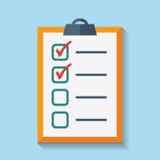News and Updates
Home fire safety
One of the most common emergencies Canadians experience is a fire in their home. House fires can happen anywhere and anytime, but they're most common between December and March1. Since Fire Prevention Week is October 6 to 12, it's the perfect time to learn how to protect your home and loved ones from the impacts of fire. A house fire can pose a severe threat in just a few minutes, which is why it's so important to be informed and prepared.
Plan your fire escape
If a fire occurred in your home tonight, would you and your family be able to get out safely? Everyone should know what to do and where to go when the smoke alarm sounds. Ensure you have a home fire escape plan by following these steps2:
- Draw a floor plan of your home.
- Include all possible emergency exits, including doors, windows, and stairways.
- Show two ways out of every room, if possible.
- Identify anyone needing help to escape, such as young children, older adults, or people with disabilities.
- Choose a meeting spot outside.
- Call the fire department from outside your home.
- Practice your escape by walking through the escape routes for each room.
Remember, practice makes perfect. Hold a fire drill at least twice a year and time how long it takes to gauge your preparedness. In a real fire, you need to react without hesitation, as smoke and flames could block your escape routes. Regular practice ensures that everyone in your household is familiar with the escape plan and can act quickly and decisively in an emergency.
Smoke alarms
Smoke alarms give you the precious time you need to escape a fire. Every home in Ontario must have a working smoke alarm on every floor and outside all sleeping areas. As a homeowner, it’s your responsibility to install and maintain the smoke alarms in your home. Because smoke rises, smoke alarms should be installed on the ceiling and, if not possible, high up on a wall. Smoke alarms have different features and applications, so choosing the right alarm can be confusing. Some features to consider include a power source (electric vs. battery), technology (ionization vs. photo-electric), and pause feature2. Always follow the manufacturer’s instructions when installing your smoke alarms. Test your smoke alarms every month and replace the battery at least once a year. All smoke alarms wear out, so replacing them every ten years is recommended.
Fire prevention
The best way to stay safe when it comes to fires is to prevent them from starting in the first place. Here are some tips to address the leading causes of house fires:
1. Cooking:
Cooking is the leading cause of house fires3. To prevent a fire2:
- Refrain from cooking if you're feeling drowsy or under the influence of alcohol or drugs.
- Stay in the kitchen while cooking, and turn off the stove if you need to step away.
- Keep flammable materials, such as oven mitts, cooking utensils, dishcloths, paper towels, potholders, etc., away from the stove.
- Wear tops with short or tight sleeves, or roll your sleeves up while cooking to prevent loose clothing from catching fire from the stove burners.
2. Heating equipment:
Heating equipment is the second leading cause of house fires3. To prevent a fire2:
- Ensure your fireplace or woodstove is installed by a qualified technician who follows the manufacturer's instructions.
- Have your heating system, vents, and chimneys inspected and cleaned annually by a qualified service technician.
- Ensure all outdoor heating vents aren't blocked.
- Let fireplace or woodstove ashes cool completely before emptying them into a metal container with a lid, then store the container outside
- Always have a fire screen in front of your fireplace
- Always burn dry, well-seasoned wood in your fireplace or woodstove to reduce the risk of excessive creosote build-up in the chimney.
- Keep space heaters at least one metre away from flammable materials such as clothing, curtains, or upholstery.
Protecting your home and loved ones
Under a standard homeowner, condo, or tenant policy, damage and destruction caused by fire will be covered. These policies also often have mass evacuation coverage, which includes a portion for additional living expenses like hotel accommodations and meals. If insured with OTIP, check with an OTIP insurance broker to see the limit on your policy for those additional living expenses. It's important to note that it starts on evacuation day, so keep all your receipts.
If you lost your home, the cost of building a new home or purchasing a new one could be covered, but how much depends on the policy you have. In the event of a total loss, your policy includes the remediation of your land.
In the event of a house fire, and once you’re in the headspace to think about next steps, you should report your claim to our 24-Hour Emergency Service as soon as possible. Detail your claim as much as possible by listing your belongings that may have been damaged or destroyed. Evidence of your belongings could be available online, such as a photo on social media or an electronic receipt. If you haven’t already, consider making a record of all your belongings with a home inventory list. It’ll help make filing a claim less complicated in the future. You may not know the status of your home or when you can get back in, but opening a claim will allow your insurer to assign an adjuster and pull in additional resources if necessary.
Our policies are designed to provide you with the flexibility and security you need during such challenging times. Remember, we’re here to support you every step of the way. If you're a current OTIP policyholder, contact us at 1-833-494-0090 to review your existing home insurance policy. If you’re not insured with OTIP and are shopping for home insurance, call us at 1-888-892-4935 to get a quote and receive a $20 gift card of your choice!







